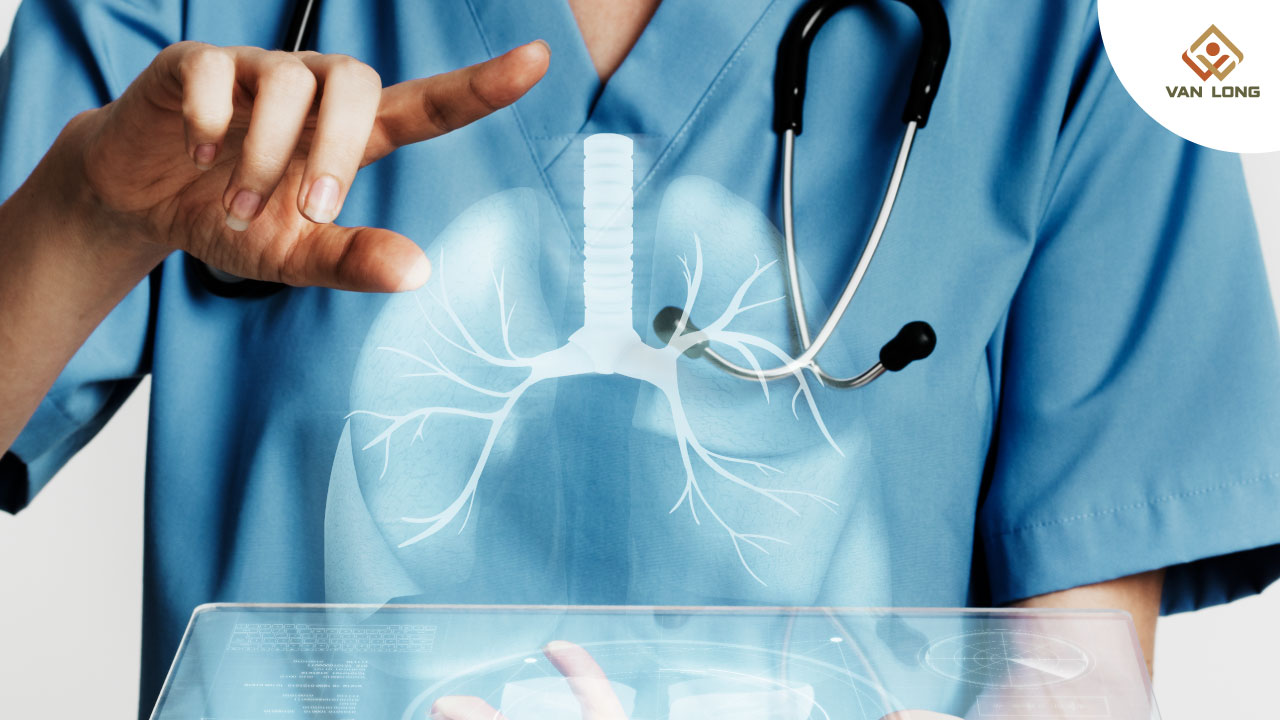Bệnh phổi tắc nghẽn mạn tính (COPD) là một trong những bệnh lý hô hấp mạn tính phổ biến và ngày càng gia tăng, đặc biệt ở người trung niên và cao tuổi. Trong đó, giai đoạn 2 là thời điểm bệnh đã bắt đầu ảnh hưởng rõ rệt đến khả năng hỗ trợ hô hấp của cơ thể nhưng chưa đến mức nghiêm trọng nhất. Việc nhận biết, điều trị kịp thời và sử dụng các thiết bị hỗ trợ như máy xông khí dung có thể giúp cải thiện rõ rệt chất lượng sống của người bệnh.

COPD giai đoạn 2 được xem là giai đoạn trung bình trong tiến trình phát triển của bệnh, với tình trạng tắc nghẽn luồng khí thở ra đã ở mức đáng kể nhưng vẫn còn khả năng kiểm soát tốt nếu tuân thủ điều trị. Các tổn thương không hồi phục xảy ra tại nhu mô phổi và các phế nang khiến người bệnh xuất hiện các triệu chứng:
Trong giai đoạn này, người bệnh dễ gặp các đợt bùng phát cấp tính nếu không tuân thủ điều trị, làm tăng nguy cơ nhập viện và ảnh hưởng nghiêm trọng đến sức khỏe tổng thể.

Hút thuốc lá là nguyên nhân chính gây ra hơn 90% các trường hợp COPD. Khói thuốc chứa hàng trăm chất độc làm phá hủy cấu trúc phế nang, tăng viêm nhiễm đường hô hấp, gây tổn thương không thể phục hồi.
Tiếp xúc lâu dài với môi trường có bụi mịn, khí độc từ công nghiệp, khói đốt củi, rơm rạ hoặc chất thải sinh hoạt đều góp phần gây tổn thương phổi mãn tính.
Người từ 40 tuổi trở lên thường có sự suy giảm tự nhiên về chức năng phổi. Ngoài ra, các bệnh lý như hen suyễn, viêm phế quản mạn, giãn phế nang hoặc tiền sử lao phổi cũng làm tăng nguy cơ mắc COPD.
Yếu tố này khiến cơ thể không thể bảo vệ phổi khỏi sự phá hủy do enzyme, dẫn đến tổn thương phế nang sớm, kể cả khi không hút thuốc.
Hiện tại, các tổn thương ở phổi và phế nang trong COPD giai đoạn 2 đã chuyển sang mãn tính và không thể phục hồi hoàn toàn. Tuy nhiên, điều trị đúng cách có thể:
Mục tiêu điều trị bao gồm:
Máy xông khí dung là thiết bị chuyển thuốc dạng lỏng thành hơi sương mịn giúp thuốc thấm sâu vào đường hô hấp dưới. Lợi ích bao gồm:
Sử dụng thở khí dung hàng ngày theo chỉ dẫn giúp giảm đáng kể nguy cơ nhập viện do đợt cấp.
Người bệnh COPD nên được trang bị một số thiết bị y tế cá nhân nhằm chủ động theo dõi tình trạng bệnh:
Sự kết hợp giữa thuốc, thiết bị và lối sống khoa học là chiến lược điều trị toàn diện cho người bệnh.
Những điểm cần lưu ý:
Sử dụng đúng cách sẽ giúp người bệnh tối ưu hiệu quả điều trị, tránh nguy cơ nhiễm khuẩn hoặc làm giảm hiệu lực thuốc.
Người bệnh COPD giai đoạn 2 cần nhập viện khẩn cấp nếu có các triệu chứng:
Phát hiện sớm và xử trí kịp thời là yếu tố sống còn trong phòng tránh biến chứng nguy hiểm.
COPD giai đoạn 2 là dấu mốc quan trọng trong tiến trình bệnh lý điều trị phổi. Việc quản lý hiệu quả phụ thuộc vào sự kết hợp đồng bộ giữa thuốc, thay đổi lối sống và đặc biệt là sử dụng thiết bị hỗ trợ như máy xông khí dung. Người bệnh cần chủ động xây dựng môi trường sống lành mạnh, duy trì các thiết bị thiết bị y học gia đình như máy đo SpO2, máy xông khí dung tại nhà để kiểm soát triệu chứng tốt hơn mỗi ngày. Sự chủ động hôm nay chính là hành trang vững chắc cho một lá phổi khỏe mạnh về lâu dài.
——————————
CÔNG TY TNHH PHÁT TRIỂN THƯƠNG MẠI DỊCH VỤ VÂN LONG
YOUR NEEDS - OUR BUSINESS
Hotline: (028) 3526 2468 / 098.484.0440
Email: cskh@vl-groups.com
Website: www.vl-groups.com
Địa chỉ:
- Văn phòng HCM: Tòa nhà Fosco, D35 + D36 - 40 Bà Huyện Thanh Quan, P.Xuân Hòa, TP. HCM
- Trung tâm bảo hành: 373/14 Nguyễn Kiệm, P.Đức Nhuận, TP.HCM
- Văn phòng Hà Nội: Khu VP Hồng Hà, 38.3/1 Ngõ 109 Trường Chinh, P.Phương Liệt, Q.Thanh Xuân, Hà Nội
- Kho Tổng: 938 Quốc Lộ 1A, P.Linh Xuân, TP.HCM
🌼 Shopee: https://shopee.vn/vanlonggroups
🌼 Tiktok: https://www.tiktok.com/@thietbichamsocsuckhoe
🌼 Tiki: https://tiki.vn/cua-hang/cham-soc-suc-khoe-van-long
🌼 Lazada: https://www.lazada.vn/shop/van-long-our-needs-your-business